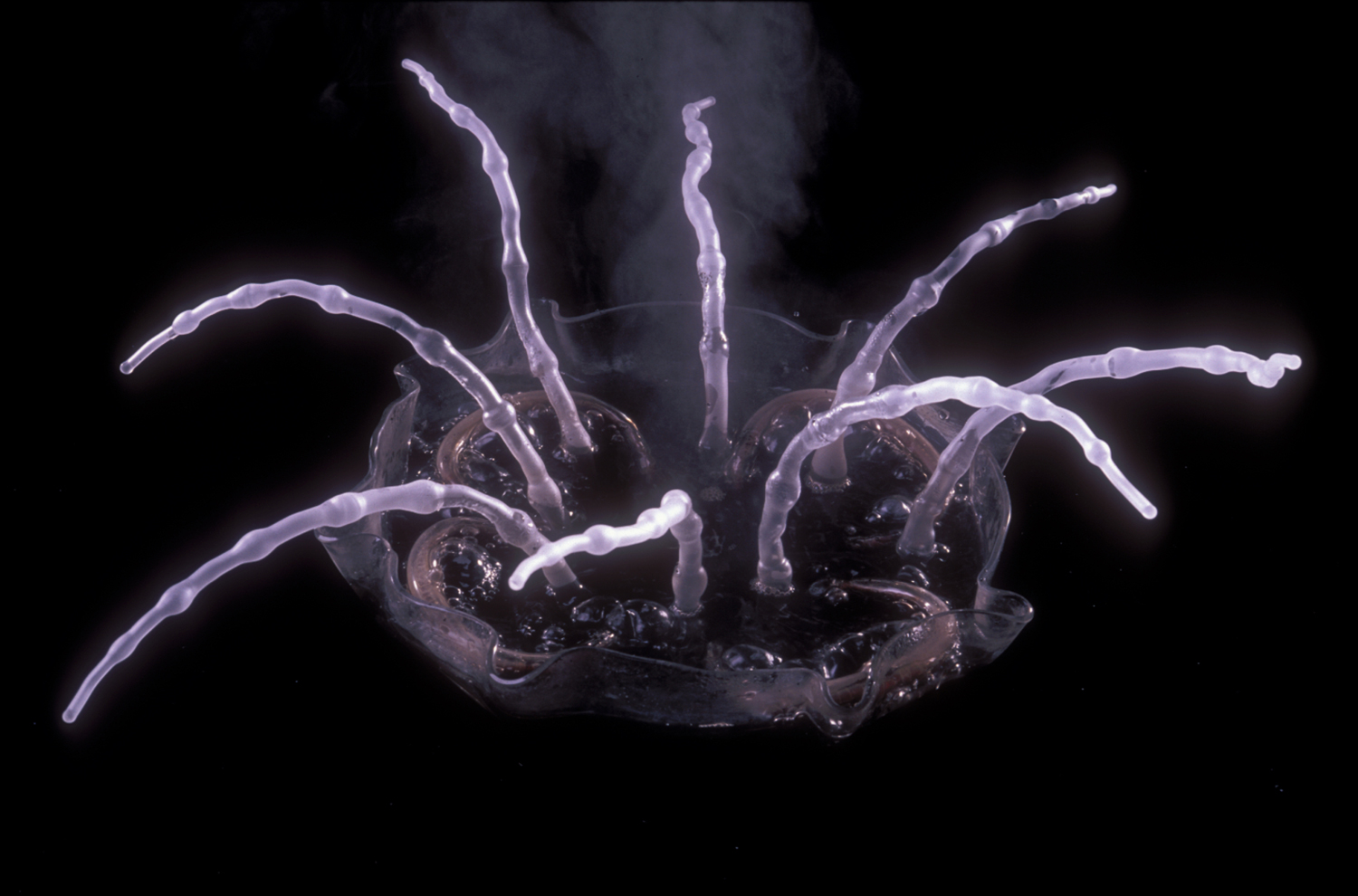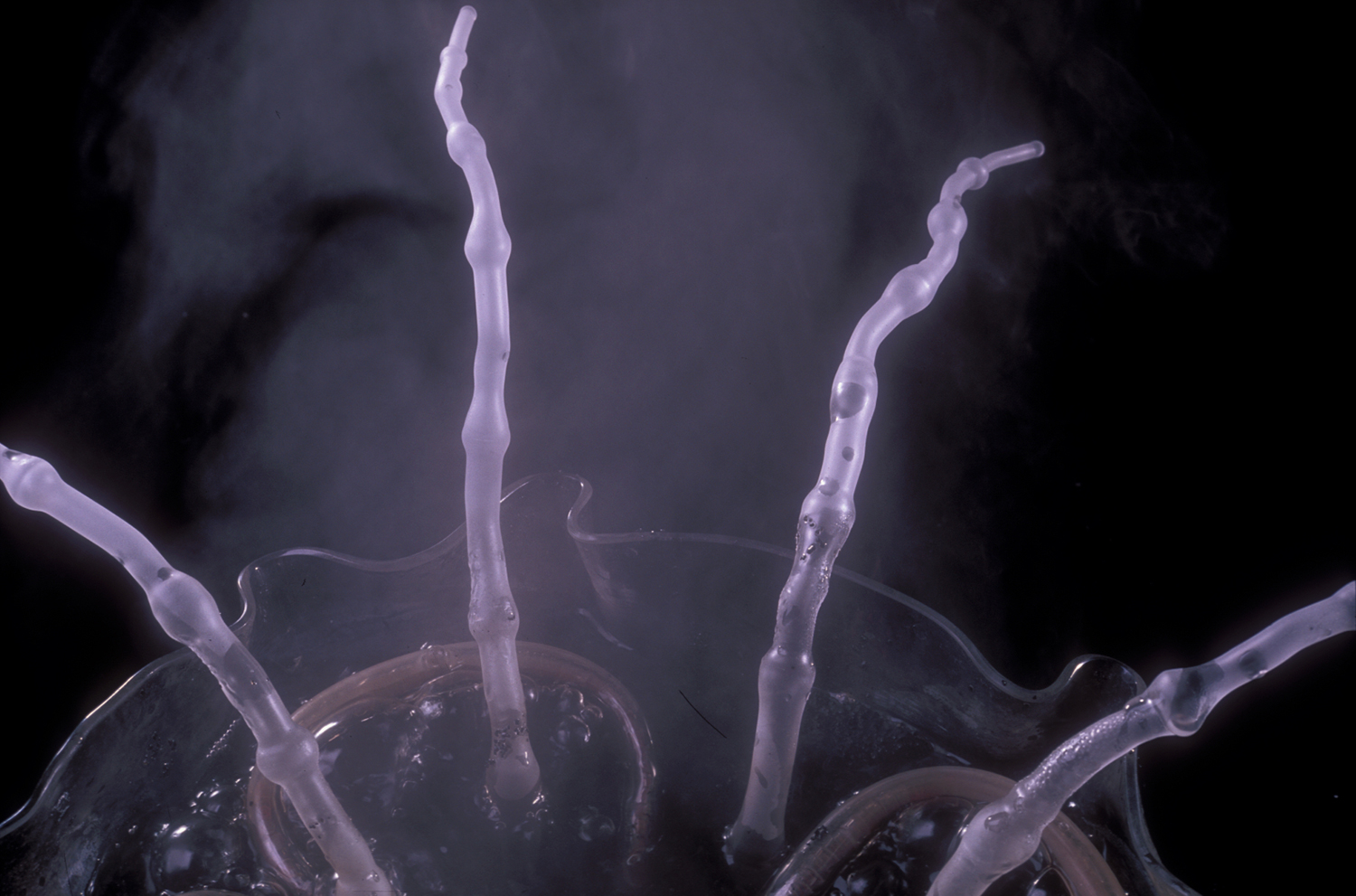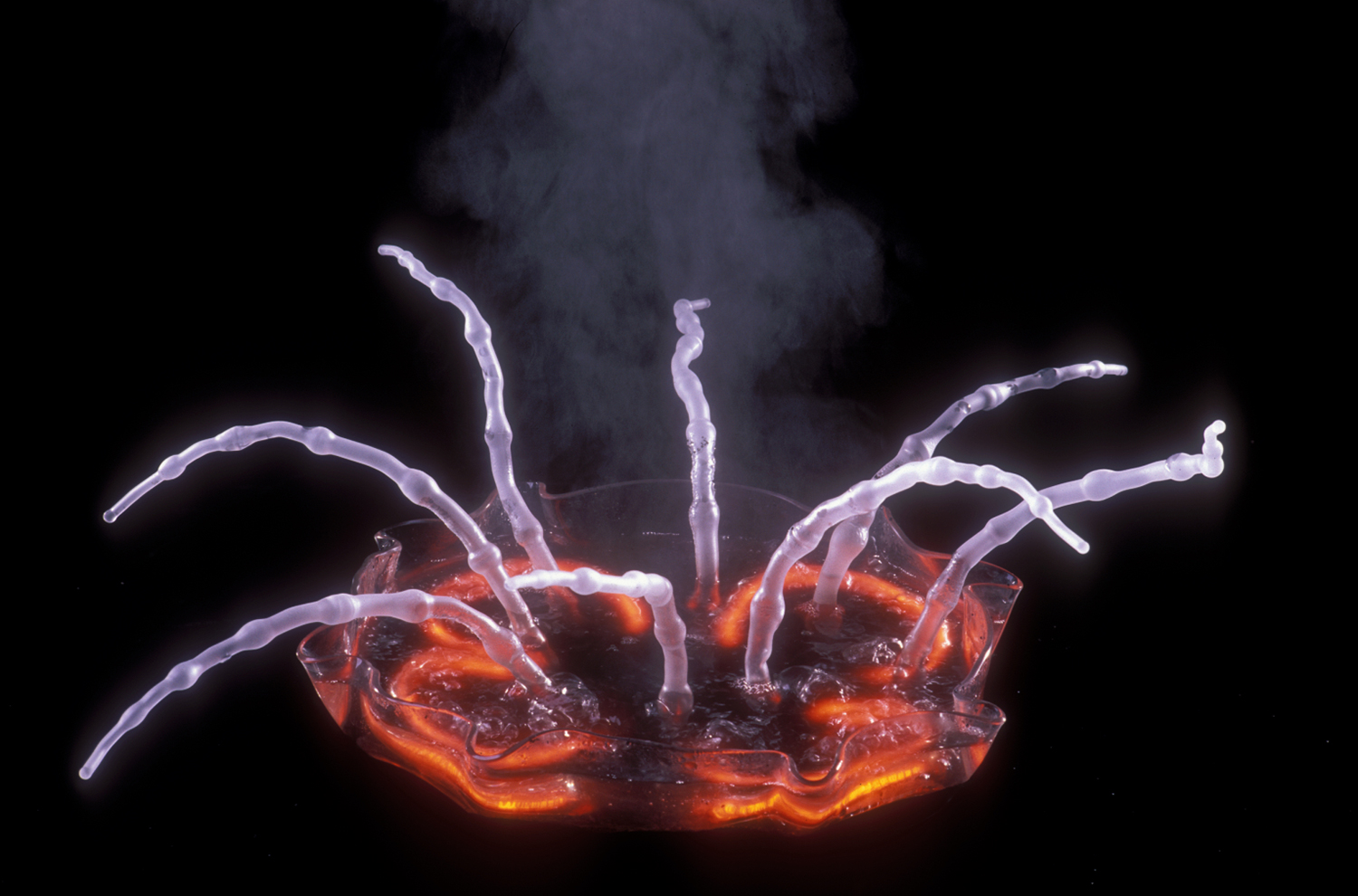Joan Brigham's steam sculptures were hand blown at the MIT glass shop. As flames or electricity heat the water, pressure mounts and steams spews forth in dynamic bursts of steam power. Many were fabricated by glassblower Eric Starosielski.
AEOLIPILES: A SKETCHY HISTORY by Joan Brigham, 2001
The source for this “philosophic instrument” is from Pneumatica by Hero of Alexandra who discovered the principle governing this physical behavior which led, eventually, to the development of the jet engine. This is sometimes referred to as “Hero’s Engine.” He lived circa 1BC or AD—accounts vary. He called the principle of this energy source the Aeolipile. As evidenced in Pneumatica, the various inventions described in his text include bronze birds that sing, bronze snakes that hiss, thrones that levitate—all part of the magical arts. Hero was essentially an early special effects artist. He must not have thought of steam energy as a replacement for human energy through steam-driven machines since slave labor was abundantly available. The history of technology had to wait approximately sixteen hundred years for that.
Through several translations and many decades, some of these ideas from Pneumatica found their way to application in the design of water features in the gardens of Italian Baroque villas. There are numerous visitors’ accounts of memorable diversions to these elaborate gardens.
This information was discovered in doing research on the history of steam while in Paris in 1978. I asked the glass blower at the Musee des Arts et Metiers in Paris to try out some ideas Hero had set out. As transformed into glass, these vessels containing boiling water rotated on their pivots—either vertically or horizontally—driven by steam issuing from small apertures. I have collaborated with G. Finkenbeiner in the fabrication of larger and better engineered versions of these work, and after his death, with Eric Starosielski, who is currently my collaborating glassblower.
Jelli was inspired by sea urchins. It doesn't spin, but glows and emits clouds of steam.
Fissure
Water, quartz glass reservoir, floating glass spheres. aluminum stainless. nickel chromium wire, electric current 20”L x 13” W x 6”H. Inside the transparent reservoir, electric coils heat the distilled water to the boiling point and the steam escapes through the longitudinal opening. The glass spheres mix with the bubbles of the boiling water so that the two are indistinguishable. The commonplace act of boiling water in a container on a stove confounds the predicted behavior of the water bubbles and our visual perception of them.
Glass Grass
Water, quartz glass reservoir, stainless steel, aluminum, nickel chromium wire, electric current. 23”L x 13” W x 13”H. As the water boils in the reservoir, it activates the 17 rows of paddles below the surface which support the thin green blades of grass. As the water increases its turbulence, the thin blades of green grass sway randomly back and forth, but do not strike one another. Wind power has been substituted by water power.
Sine Waves
Water, quartz glass, aluminum stainless nickel chromium wire, electric current. 22” L x 13” W x 13” H. Six pairs of stainless steel tubes carry the steam produced by the boiling water up to the horizontally mounted glass tubes. Each of the tubes has two small exit holes pointing in opposite directions thus causing the horizontal clear tubes to rotate as the steam escapes. This principal was first discovered by Hero of Alexandria during his researches there and it now, greatly magnified, propels jet engines. Each rotating tube becomes the graphic expression of wave form.
Medusa is a glass Aeolipile, designed by Joan Brigham and the glass was blown by Eric Starosielski. (Images from video by Ellen Sebring, 2009)
Ubu Roi is named after an 1896 play by Alfred Jarrey.













